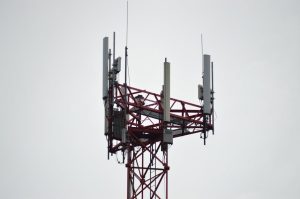
MEO Satellites: Revolutionizing Global Connectivity with Medium Earth Orbit Technology
Medium Earth Orbit (MEO) satellites are a type of satellite that operates in an orbit between 2,000 and 36,000 kilometers above the Earth’s surface. This orbit is higher than Low Earth Orbit (LEO) satellites but lower than Geostationary Orbit (GEO) satellites. MEO satellites are designed to provide a unique combination of low latency and wide coverage, making them ideal for a variety of applications, including telecommunications, navigation, and Earth observation.
MEO satellites have several advantages over other types of satellites. One of the main benefits is their low latency, which is the time it takes for a signal to travel from the Earth to the satellite and back again. Because MEO satellites are closer to the Earth than GEO satellites, they have a lower latency, which is typically around 20-30 milliseconds. This makes them well-suited for applications that require real-time communication, such as video conferencing and online gaming.
Another advantage of MEO satellites is their wide coverage area. Because they operate in a higher orbit than LEO satellites, they can cover a larger area of the Earth’s surface. This makes them ideal for providing broadband internet access to remote or underserved communities, where traditional terrestrial infrastructure may not be available.
In addition to their technical advantages, MEO satellites also offer a number of economic benefits. Because they can provide a high level of coverage and capacity, they can be used to support a wide range of applications, from telecommunications and navigation to Earth observation and scientific research. This can help to drive economic growth and development, particularly in regions where access to these services is limited.
How MEO Satellites Work
MEO satellites use a variety of technologies to provide their services. They typically operate in the Ka-band or Ku-band frequency range, which provides a high level of bandwidth and capacity. They also use advanced antenna systems, such as phased arrays, to direct their signals towards specific areas of the Earth’s surface.
MEO satellites also use a variety of propulsion systems to maintain their orbit and position. These can include traditional chemical propulsion systems, as well as more advanced systems, such as electric propulsion or ion engines. These systems allow the satellites to make adjustments to their orbit and position, which helps to maintain their coverage area and ensure that they continue to provide a high level of service.
Applications of MEO Satellites
MEO satellites have a wide range of applications, including telecommunications, navigation, Earth observation, and scientific research. They can be used to provide broadband internet access, as well as a variety of other telecommunications services, such as voice and data communications. They can also be used for navigation, providing location information and timing signals to a wide range of users, from aviation and maritime to personal navigation devices.
MEO satellites can also be used for Earth observation, providing high-resolution images and data on the Earth’s surface. This can be used for a variety of applications, including environmental monitoring, disaster response, and agricultural management. Finally, MEO satellites can be used for scientific research, providing a platform for a wide range of experiments and observations, from astronomy and astrophysics to Earth science and climate change research.
Conclusion
In conclusion, MEO satellites are a type of satellite that offers a unique combination of low latency and wide coverage, making them ideal for a variety of applications, including telecommunications, navigation, and Earth observation. They have several advantages over other types of satellites, including their low latency and wide coverage area. They also offer a number of economic benefits, including the ability to drive economic growth and development, particularly in regions where access to these services is limited.
As the demand for satellite-based services continues to grow, MEO satellites are likely to play an increasingly important role in meeting this demand. With their advanced technologies and wide range of applications, they are well-suited to provide a high level of service and support a wide range of users, from individuals and businesses to governments and organizations.





